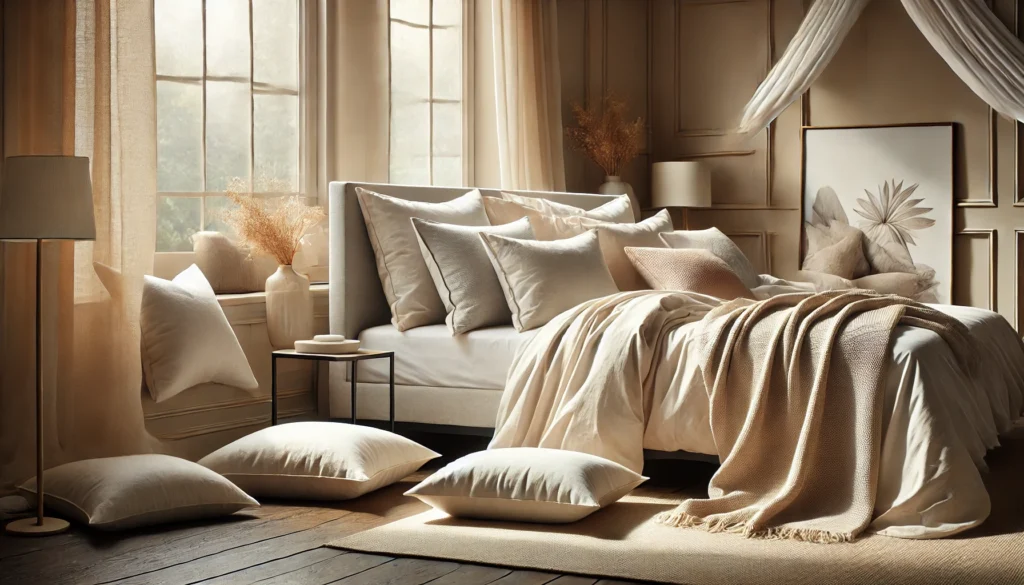The fashion industry is developing. Leading this shift is Lyocell fabric, which combines sustainability, flexibility, and luxury. As the demand for eco-friendly clothing grows, Lycel has become the dominant choice for designer consumers. In this article, we’ll explore what makes Lycel clothing special, how it works, and why it has become an accessory for those who love sustainable fashion.
The Rise of Eco-Friendly Fabrics
Materials that are environmentally friendly have been becoming more common in the textile sector in recent years. Tests have been conducted to find out the environmental effect of traditional natural materials like cotton and linen. Cotton, for example, needs a sufficient supply of water and frequently needs insecticides. In contrast, fabrics like Lycel are recognized as having a low environmental impact.
Wood pulp is used to make lyocell. It is a resource that is renewable since it primarily originates from trees that grow quickly, like eucalyptus. The sustainability of this fabric depends not only on the raw materials. But it also undergoes a closed production process that minimizes waste. When compared to growing cotton, which uses concentrated water, Producing lyocell requires less water and less hazardous chemicals. Making it a more environmentally friendly choice.

Versatility in Fashion
Lyocell is known for being soft and breathable. This makes it suitable for a wide range of clothing, from casual linen underwear to high-end fashion. Lyocell is not just another type of linen material. Lyocell has excellent wet absorption properties. Keeps the wearer cool and dry. This is especially important in tropical climates where ventilation is important.
Another advantage of lyocell is its range of uses since it can be combined with different fibers like linen, cotton, or even synthetic materials to make mixes. Its unique texture and qualities are a result of these components. Customers may now choose from a wider range of clothing options. The greatest features of both materials are combined in cotton and linen or cotton/linen/lyocell mixes, which provide comfort, durability, and environmental friendliness.

Beyond Clothing: Expanding the Use of Lyocell
Although Lyocell’s initial popularity grew from its use in textiles, its application has expanded to areas such as home textiles. Bedsheets, bedding, and even linen straps are now available in Leocell as a more sustainable alternative to traditional fabrics. The moisture-wicking properties of Lyocell make cloth or towels especially attractive. Where ventilation and comfort are paramount.
The combination of linen and textile materials with Lyocell makes it not only an eco-friendly choice, but it also has durable quality. Unlike traditional cotton sheets, Lyocell products are more resistant to wear and tear. Due to durable fibers, Linen has also been revolutionized with the introduction of lyocell. This is a soft and flexible option. Which is equally stylish.

The Eco-Friendly Fiber Market
Global awareness of sustainability has consumers questioning where their clothes come from. Linen and flax have long been praised as natural, sustainable fibers. However, the water and chemicals required to process these materials are prompting consumers to look for better alternatives, such as Lyocell.
Countries that traditionally use linen include France and Belgium, which is known for producing flax linen. This is changing, with manufacturers integrating Lyocell into their product lines to appeal to more environmentally conscious markets for textiles, countries such as China and India. It was the main center for linen. They are also seeing an increase in Lyocell production.
Breaking Down Misconceptions: Is Lyocell Better than Linen or Cotton?
For those new to Lycel, it’s important to understand how it compares to other natural fibers like linen or cotton. Many people still wonder if it’s cotton or linen? The answer is no. Linen comes from flax. While cotton is harvested from the cotton plant. Each one has unique properties. But in terms of durability and performance, Lyocell stands out.
For example, linen and cotton are often debated over comfort and durability, but Lyocell offers a unique blend of both. In the discussion of linen and linen combinations. Mixtures with lyselle are softer. Absorbs more and tends to wrinkle less than traditional linen. This makes it a sought-after fabric for high fashion designers and environmentally conscious consumers.

Lyocell and Luxury: Why High-End Brands are Embracing It
The rich feel of Lyocell is one of the factors contributing to its rise in popularity in high-end apparel. The fabric is as silky and shiny as silk or linen, and it’s opulent. High-end brands turn to Lycel because it offers the same elegance matched by a commitment to sustainability.
Due to its hypoallergenic properties, lyocell is perfect for those with sensitive skin. This is a common concern for linen and wool covering products. Even high-end pure linen lines combine Lyocell with linen to create clothing that is not only eco-friendly but also gentle on the skin.

Lyocell in Modern Fashion
Lyocell fabric has become a rising star in modern fashion due to its sustainable attributes and luxurious feel. Designers and brands worldwide are increasingly incorporating Lyocell into their collections, from high-street fashion to luxury couture. Its smooth texture, drape, and softness make it a perfect choice for various garments, from casual T-shirts to formal wear. Leading sustainable fashion brands have embraced Lyocell for its eco-friendly production process and its ability to blend with other materials like cotton, wool, or synthetic fibers, enhancing its versatility and appeal.
Example of Fashion Applications
Lyocell is now used in a wide range of clothing items, including shirts, trousers, dresses, and even activewear. Its moisture-wicking properties make it an ideal choice for sportswear, providing comfort during intense physical activity. Fashion brands like Patagonia and Eileen Fisher are pioneers in adopting Lyocell for their sustainable clothing lines.
The Environmental Impact of Lyocell
One of the biggest advantages of Lyocell is its minimal environmental footprint. The production process is recognized for being closed-loop, meaning that nearly all the solvents and water used in production are recycled and reused. This significantly reduces waste and pollution compared to traditional fabric manufacturing processes. Additionally, the raw material for Lyocell, wood pulp, is sourced from sustainably managed forests, ensuring that the natural environment is preserved.
Comparison to Other Sustainable Fabrics
When compared to other fabrics like organic cotton or hemp, Lyocell stands out for its efficient use of water and energy. Cotton, for instance, requires vast amounts of water to grow, while Lyocell production uses less water and does not involve harmful pesticides. Similarly, while hemp is a strong and sustainable option, its rough texture is not as versatile as Lyocell’s silky smoothness, which appeals to a broader range of applications.
Lyocell’s Versatility Beyond Fashion
While Lyocell is celebrated for its role in fashion, its uses extend far beyond apparel. Thanks to its biodegradable nature and moisture-absorbent properties, it is also used in non-woven products like baby wipes, medical dressings, and even bed linens. This versatility makes Lyocell an attractive material for industries seeking eco-friendly alternatives to synthetic fibers, which can take decades to decompose.
Lyocell in Home Textiles
Another significant area where Lyocell is making its mark is home textiles. Bedding and home furnishings made from Lyocell are not only soft and durable but also hypoallergenic and moisture-resistant, making them ideal for people with sensitive skin. Products such as Lyocell bed sheets, pillowcases, and blankets are becoming increasingly popular for their comfort and sustainability.
Lyocell and the Circular Economy
The concept of a circular economy aims to minimize waste and make the most of resources, and Lyocell fits perfectly into this model. The fabric’s biodegradability ensures that at the end of its life cycle, it breaks down naturally without leaving harmful residues in the environment. Additionally, the production process for Lyocell aligns with the principles of a circular economy due to its low energy use and high recyclability of resources.
The Future of Lyocell in a Sustainable World
As the world shifts towards more sustainable practices, the demand for eco-friendly materials like Lyocell is expected to grow. With continued innovation in production techniques, Lyocell has the potential to become even more sustainable and affordable for a broader range of consumers. Its role in reducing the fashion industry’s environmental impact cannot be overstated, making it a key fabric in the move towards a greener future.

Innovations in Lyocell Production
Innovation in the lyocell manufacturing process is another reason why it is unique. Unlike traditional fabrics, the lyocell production process reduces waste and reuses resources. This is in contrast to the linen production process for linen, which involves more steps and uses more resources. Lyocell’s innovative production drives the entire textile industry towards a greener future.
Lyocell in the Context of Circular Fashion
With the increasing push for circular fashion, fabrics like lyocell are becoming the cornerstone of zero-waste fashion initiatives. Brands are looking at ways to recycle old clothing back into the supply chain. Lyocell fits perfectly into this model, as its closed-loop production already minimizes waste. As opposed to fabric from flax or cotton vs linen debates, lyocell can be recycled more efficiently, reducing the overall environmental impact.
Conclusion: Lyocell’s Role in the Future of Sustainable Fashion
As consumers become more informed about the materials in their wardrobe, lyocell stands out as a future-forward fabric. Its blend of sustainability, comfort, and versatility makes it an ideal choice for both fashion enthusiasts and environmentally conscious consumers.
Whether you’re exploring linen fabric for clothing or considering a switch from cotton linen fabric, lyocell presents an eco-friendly alternative that doesn’t compromise on quality or luxury. The rise of this fabric signals a shift toward greener fashion, with lyocell leading the charge in reducing the industry’s environmental footprint.
Embrace lyocell not only as a fabric but as a step toward a more sustainable future—because in the world of fashion, sustainability is no longer just a trend; it’s a necessity.
